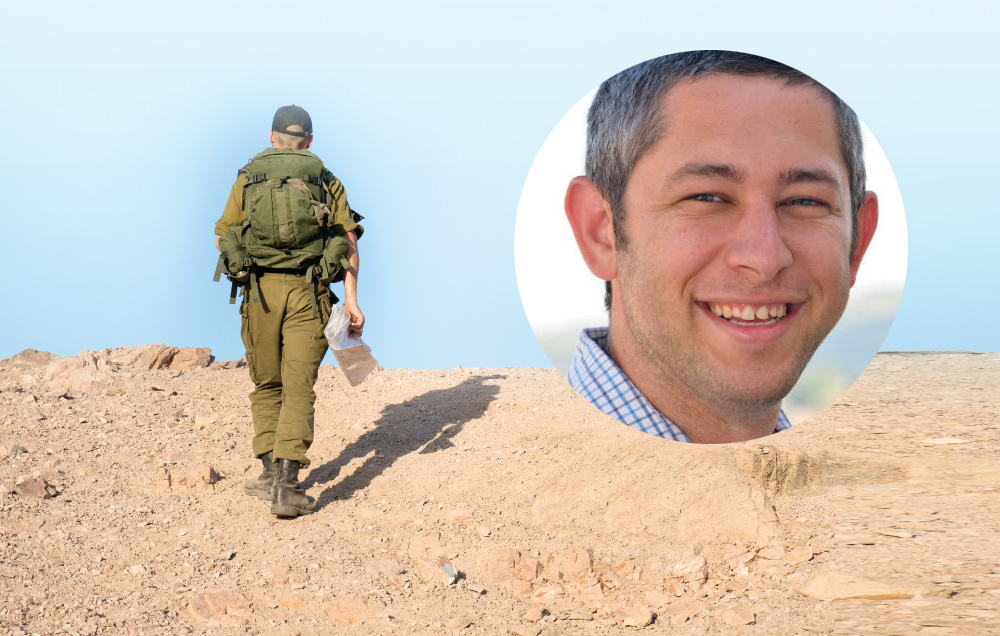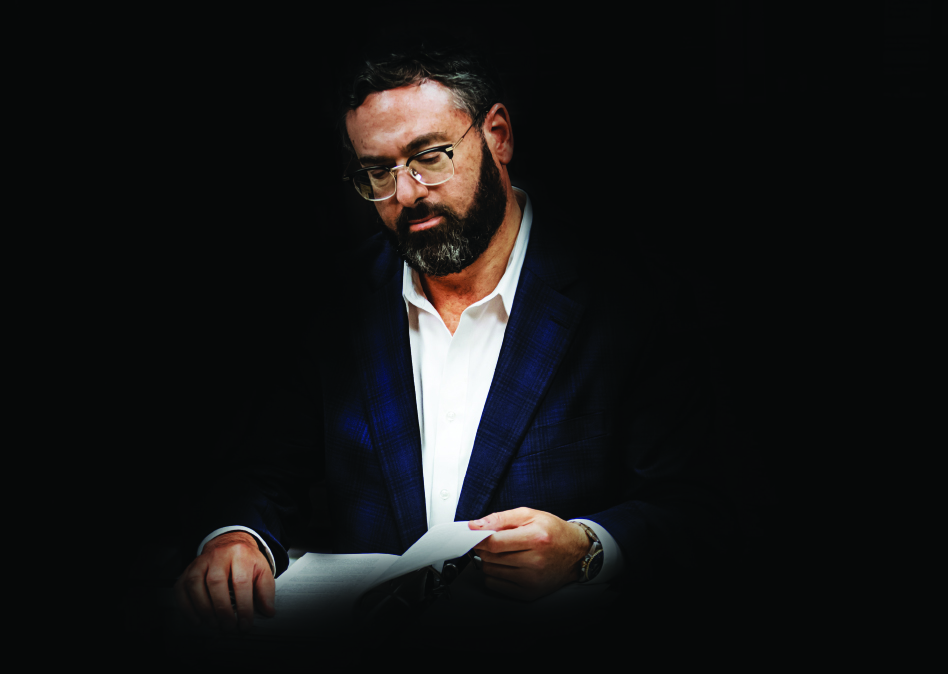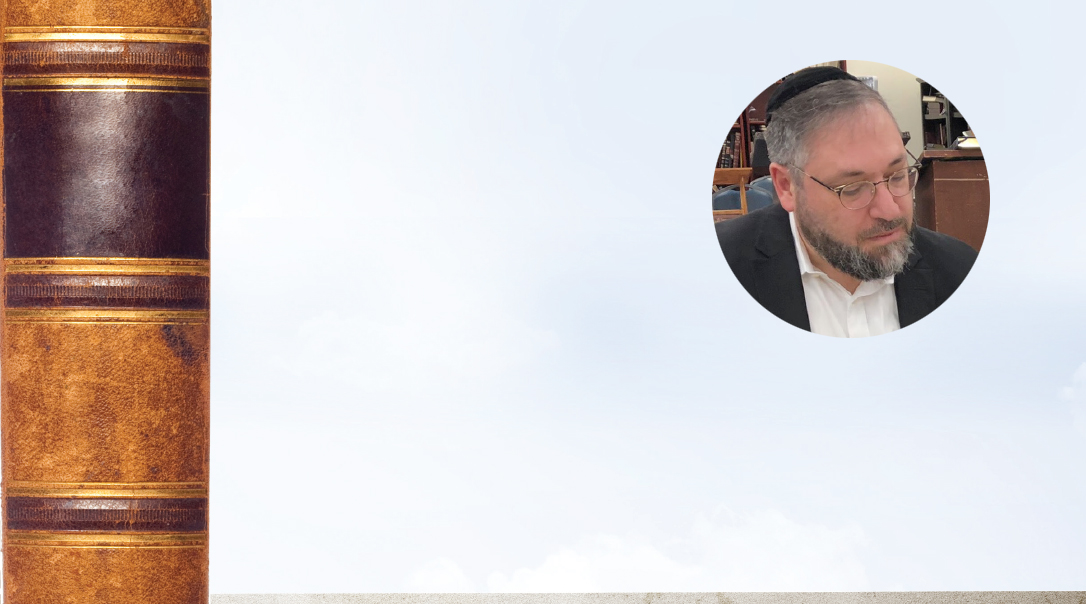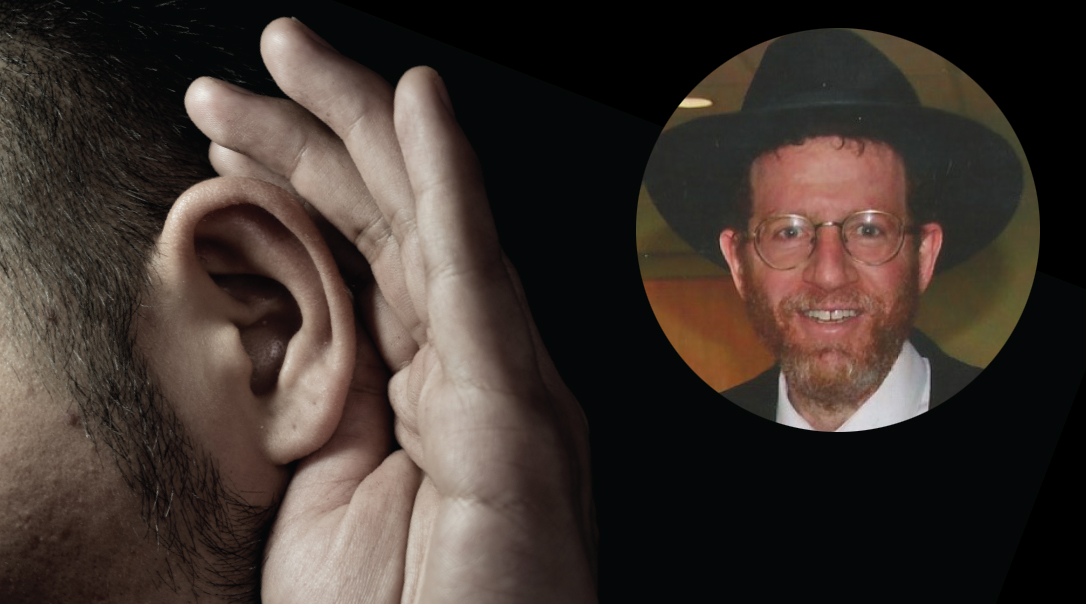Clip and Save


W
hen Chananya Kramer’s father bought a video camera in honor of Chananya’s bar mitzvah back in 1984, he probably didn’t suspect it would be the catalyst to catapult his creative son into the world of multimedia, eventually becoming the go-to video wizard for hundreds of thousands of Jews celebrating the Siyum HaShas. At the time, this was a state-of-the art, high-tech device that used a hard cable wire to connect the camera to the VCR. And that was just fine with Chananya — he’d been developing presentations to entertain his family since he was a little boy.
Over the years, Chananya’s combined affinity for computer applications and entertainment, under his Baltimore-based Kolrom company label, has been the creative force for hundreds of films, videos and documentaries. There’s the animated film Megillas Lester, the documentary Techeiles: It’s Not All Black and White, and the super-funny clip How Not to Perform Bikur Cholim, to name just a few you might be familiar with. (Way before that, when Chananya was division head of Camp Romimu, he created his popular “Shluffy Bokervekker” character, who came to life as an audio comedy series.)
Today his company includes several full-time employees and outsourced designers, filmmakers, editors, illustrators, and motion graphics developers, with film crews hired to shoot at different locations all over the world. And that’s how he’s been able to spend the last year and a half filming daf yomi chaburos in Johannesburg, Gibraltar, the UK, Panama, Melbourne, Mexico, and dozens of other locations, which will be included in the video presentations at the upcoming Siyum at MetLife Stadium.
Of the hundreds of interviews he’s done in preparation for the Siyum’s video section, one interviewee — one of the Siyum’s major sponsors — answered Chananya’s question, “Why do you care so much about the Siyum HaShas?” with an answer that continues to galvanize him: “To me the Siyum HaShas is like all of Klal Yisrael holding hands.”
But there’s no inspiration like hearing first-hand from people around the globe how they manage daf yomi day after day, year after year. On a recent trip to Mexico City, Chananya spoke with a Mexican businessman and asked how he learned the daf. This balabos explained that he usually started out by listening to the daf in the evening while he worked out on the treadmill, just to get an overview. He attended a shiur in the morning and afterward, on his drive to work, he listened to the daf again for chazarah. That prepared him for the chavrusa he had later in the day for a joint review. In the evening, he attended another shiur on the daf in order to truly master it. “Instead of working his learning into his life, this man built his life around his learning. People like this are true heroes and an example to model ourselves after,” Chananya says. In fact, he found his trip to Mexico so personally inspiring that, after having experienced some false starts in the past, he recommitted himself to daf yomi in addition to his other sedarim. Like others with a similarly packed schedule, Chananya recognized that a daf yomi restart would eat into his precious family time, but his wife, Faige, told him it wasn’t even up for negotiation — of course he should learn the daf. And like others, with the consistent encouragement and support of his wife, he’s been keeping up with the daf since.
Great Expectations
Navigating the daf is not unfamiliar territory for Chananya Kramer, who learned in the Ner Israel Kollel for six years before moving into video presentations. Initially he thought he’d migrate from kollel to chinuch. But it was his mother, well-known educator Mrs. Shana Kramer, who actually introduced him to his first client. Mrs. Kramer was the founder of the Creative Learning Pavilion of Torah Umesorah, an initiative that eventually morphed into Chinuch.org. Mrs. Kramer assembled teaching materials created by the best and the brightest in the chinuch world and produced a public clearing house available to chinuch professionals. In that capacity, she traveled extensively, both around America and abroad, hosting events where printed teaching materials were circulated, collected, and exchanged (this was before the Internet had emerged as a global force — think copy machines and worksheets). And Torah Umesorah hired Chananya to prepare an informational presentation explaining this new initiative.
“I didn’t get paid much and I bit off way more than I could chew, but my business was born,” says Kramer of his first official media job. The new company was incorporated under the name “Kolrom,” loosely translated as “the voice of the CD-ROM” because, as Chananya recalls rather wistfully, “Interactive CD-ROMS were the coolest thing then.”
Twenty years ago, there wasn’t much in the way of a Jewish multimedia industry. As a director and producer who has matured in his craft alongside the growth and development of the industry, Kramer has been at the forefront of the field as advances in technology have provided consumers with high-level, sophisticated media products, which have in turn generated high-level expectations. A decade ago, he says, he would be hired to create a video for a mossad because they were making a dinner, which generally meant filming speakers giving testimonials. (That would help provide control over the dinner’s timing, and good timing made for a successful dinner.)
“Over this past decade, media has changed so significantly — print, web, everything,” Chananya says. “It is no longer a mechanism to achieve a goal, but a goal unto itself.” Today it’s unthinkable to run a dinner without providing entertainment. The video component of the program is not just for informational purposes, but for entertainment and marketing. “What makes for a successful fundraising dinner today? An outstanding venue, great food, and a killer video. Our culture has come to expect great entertainment at a high caliber event.”
But there’s a catch. Because at the same time, the frum community has somewhat of a healthy apprehension when it comes to videos, especially exposing children to them. Kramer’s company, however, at the advice and urging of gedolim with whom he’s consulted, will on occasion be hired to provide a professional product for his clients when deemed appropriate.
“The Orthodox Jewish world doesn’t have a conventional entertainment industry yet,” Chananya explains. “Either a production is considered ‘treif’ or it’s used as an educational tool. When we created our state-of-the-art animated Megillas Lester, for example, we were trying to create a film to provide a high-caliber alternative to secular entertainment, and I believe we accomplished that goal. It had healthy messaging — many midrashic references and the like, but it also happens to be great entertainment.”
While it might seem like background filler, sound design is an integral part of a high-level production. “It’s an enormous component in expressing the emotion we are trying to convey — if it’s a poignant moment or an epic scene, the music will tell the story,” Kramer explains. To capture the right music, Kolrom will either hire a musician to score a customized piece or will purchase music from a sound library. Finding the right track in the vast reaches of cyberspace can be as daunting as finding a needle in a haystack. For the upcoming 13th Siyum, Kolrom was searching for the right piece for its showpiece video and finally found the perfect score on an online resource. The problem was that the music had female voices singing the underlying chorus. “We contacted the Muscovite musician who wrote the score and he was able to remove that layer from the track, creating a custom music file that perfectly meets out needs. The musician was happy and so were we.”
No Compromises
Although most of Kolrom’s clients are mosdos or Jewish businesses, in the early days of the business, Chananya was faced with a dilemma whose resolution would come to define policy for the future. A Christian school had asked him to create a video promoting an upcoming open house.
“I considered it a compliment to get a non-Jewish client, and honestly, I really needed the money at that time — the school obviously had a large budget — but I was conflicted,” Chananya relates.
While he was considering the offer, he had to take a train from Baltimore to New York and found himself sitting beside none other than Ner Israel rosh yeshivah Rav Aharon Feldman. After Chananya laid out the facts, Rav Feldman’s response provided him with long-term guidance: Rav Feldman told him that al pi halachah it was permissible to accept the project. However, he said, in the Rosh Hashanah davening we ask that we be blessed with parnassah that is “b’heter aval lo b’issur” — a redundancy loosely meaning “parnassah that’s not disallowed.” Rav Feldman went on to explain that what we’re davening for is parnassah that doesn’t have even the taint of issur — not even a whiff of wrongdoing. This empowered Chananya to reject the project, and he’s never regretted that decision. “I’m grateful that I never had to compromise on the kind of clientele that I serve and that I am able to be ‘b’heter’ in what I do,” he says.
And, he says, there’s no greater “b’heter” than being hired to provide videos for the Siyum HaShas. (“It’s the biggest audience I’ll ever get — all of Klal Yisrael.”) So far, filming for the Siyum has been inspiring, enriching — and surprising. Like the man he interviewed in Washington, D.C., who’s served as a staff director for several senators. Like for many, the last Siyum pulled him up short and he felt compelled to upgrade his learning. Despite the difficulties and pressures of his job among high-powered politicos, he had committed to learning the daf seven years ago and will G-d willing complete the cycle this round. When Ted Cruz sees him in the hallways of the Senate he’ll call out, “Did you do the daf yet today?” Another interviewee, a principal of a day school now retired and living in Arizona, was so inspired by the last Siyum that he spearheaded a community-wide daf yomi program. He supervises the program while sporting a T-shirt that reads “The Daf Guy.”
Many of Kolrom’s presentations and documentaries find Chananya in close contact with the great Torah personalities of the generation. And the fact that he’s the son-in-law of famed author, speaker and mohel Rabbi Paysach Krohn has given him additional access, especially in the early days of his career. It was Rabbi Krohn who introduced him to Rabbi Meir Zlotowitz a”h of ArtScroll and got him his first meeting at the Agudah. Today, Rabbi Krohn’s resonant voice is featured in many of Chananya Kramer’s videos. He’s the voice of the “Living Lessons” series and was the narrator of Kolrom’s heartening “Daf Yomi Through the Decades” video shown at the 12th Siyum HaShas, which set the precedent for a packed MetLife stadium. His parting line of, “And here we are tonight, with the largest Siyum HaShas in history, where a great American palace of sport has been transformed into a sanctuary of the spirit,” has resonated over the last seven years and will ring true again on January 1.
Previously released Kolrom videos about the Siyum are available on TheSiyum.org where one can view hundred-year-old footage featuring the gedolim entering the 1923 Knessiah Gedolah where daf yomi was first proposed, including the Chofetz Chaim, the Chortkover Rebbe, the Sokolover Rebbe and Rav Elchonon Wasserman, among others. One of Chananya’s personal favorites is the soon-to-be-released documentary series called, “Why We Learn, and How Learning Torah Changes Us,” featuring interviews with roshei yeshivah, maggidei shiur, and well-known Torah personalities from around the world, including such mentors as Rav Zev Leff, Rav Ahron Lopiansky, Rav Yosef Elefant, and Rabbi Berel Wein. When Rabbi Emanuel Feldman declares, “Torah is not another subject, it’s an entry into the mind of G-d” or Rav Yitzchok Berkovits posits, “The closest anyone can ever get to HaKadosh Baruch Hu is to ingest his chochmah into your brain by learning Torah,” it is uplifting and motivating.
Kolrom’s showcase video for the 12th Siyum (they made eight altogether) opened with a shot of an alarm clock ringing and people pulling up to shuls and batei medrash in the predawn darkness. The video is built around hundreds of interviews that took place all over the world among daf yomi learners who show up every day, rain or shine, in countries and venues you’d never imagine. For the upcoming 13th Siyum, Kolrom has already produced and released dozens of pre-Siyum videos and many more are in preparation for showing at MetLife.
So what show-stopper does Kolrom have prepared for the 13th Siyum HaShas? Chananya can’t reveal the details but says that there will be a showcase video, as well as many short video presentations inserted between speakers. We will be hearing from those who learn daf yomi and from those who give the chaburos.
“They are real heroes,” Chananya says. “Most are working people and they spend late nights preparing. They take the achrayus and carry the chaburah.”
How does it feel to be able to communicate with the whole of the Jewish world?
“I look at the size of those jumbotrons at MetLife Stadium — four massive 30 x 118 HD video display boards spanning the field — and I think, ‘I’m going to be talking to Klal Yisrael through those screens.’ It’s truly humbling… I’m genuinely awed by the opportunity to be involved in this historical moment in Klal Yisrael’s history — the Torah community getting together in such numbers to celebrate Torah on such a level. Believe me when I tell you, it’s keeping me up at night.”
(Originally featured in 'Just One Day', Special Supplement, Chanuka/Siyum HaShas 5780)
Oops! We could not locate your form.













